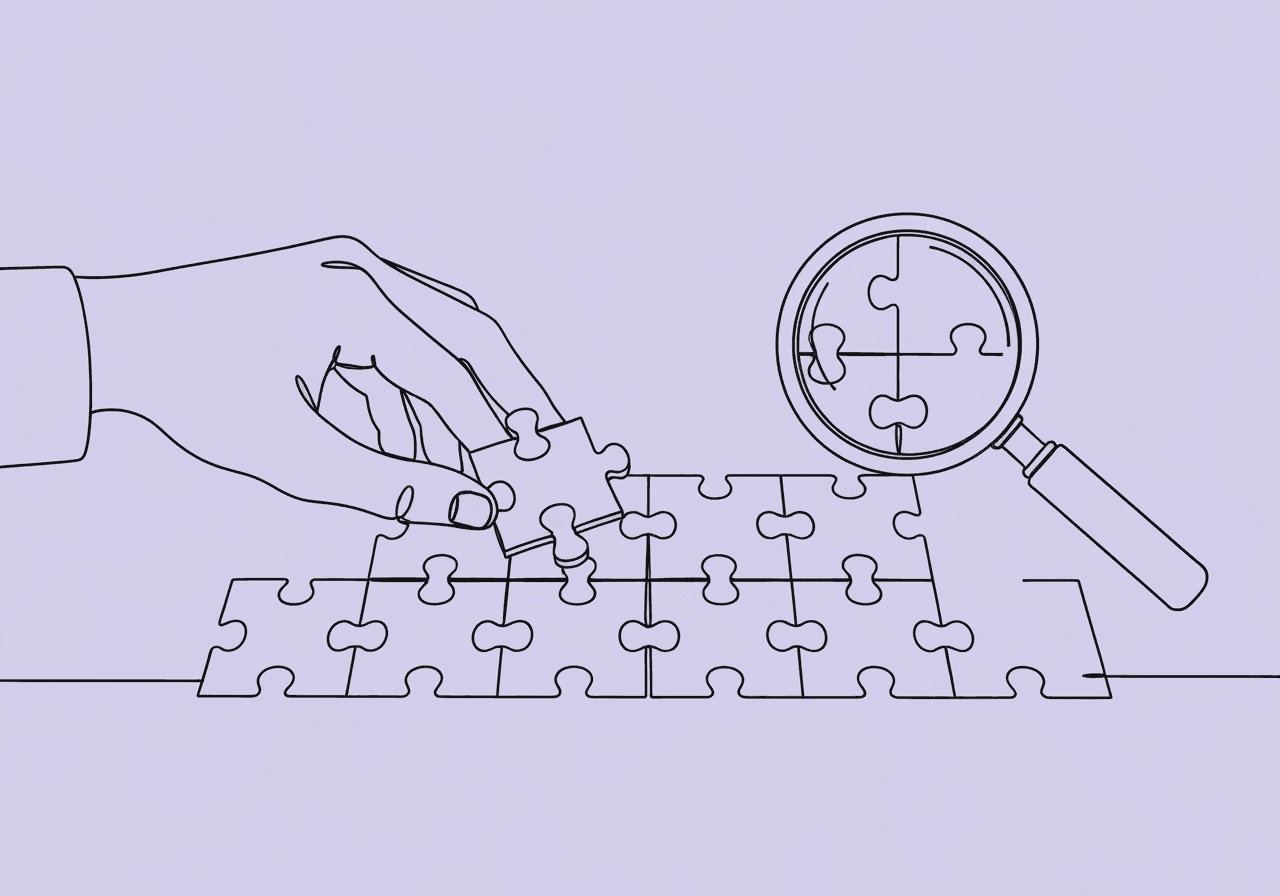CPT 97155 Documentation Narrative: A BCBA Guide

ABA therapy demands quick adaptations in a busy clinical environment, challenging BCBAs to modify treatment protocols on the fly while ensuring billing compliance. CPT 97155, which covers adaptive behavior treatment with protocol modification, requires precise documentation to substantiate these changes and secure reimbursement. A strong CPT 97155 documentation narrative isn't just paperwork—it's the backbone of demonstrating medical necessity and ethical practice, helping you avoid denials and support client progress.
This guide draws from established ABA coding guidelines to equip you with actionable strategies. You'll learn the core requirements for 97155 notes, step-by-step processes for identifying and substantiating modifications, and tips for structuring narratives that payers respect. By the end, you'll have a compliance checklist to streamline your workflow.
Key Takeaways for CPT 97155 Documentation
- Data-Driven Rationale is Essential: Your CPT 97155 documentation narrative must be rooted in objective, real-time data that clearly shows why a protocol modification was necessary.
- Link to Treatment Goals: Always connect the modification directly back to the client's overarching treatment plan goals to prove medical necessity.
- Structure for Clarity: Use a SOAP-like format (Objective, Assessment, Plan) to create a clear, payer-friendly narrative that validates your clinical decisions.
- Justify Your Time: Detail your direct, face-to-face involvement in 15-minute increments to support the units billed and differentiate from standard supervision.
Understanding CPT 97155 and Its Documentation Requirements
CPT code 97155 represents adaptive behavior treatment with protocol modification, delivered face-to-face by a qualified professional like a BCBA, in 15-minute increments. The American Medical Association's CPT guidelines state this code applies when you're directly involved in assessing client behavior and making real-time adjustments to the treatment protocol during the session.
Documentation for CPT 97155 must go beyond basic session summaries. It requires a detailed narrative that proves the modifications were clinically necessary and tied to the client's individualized treatment plan. Key elements include the session date and times (to support billing units), client identifiers (name, diagnosis, medical record number), and a clear description of your direct involvement—either one-on-one with the client or simultaneously directing a technician.
For instance, payers like UnitedHealthcare emphasize that notes must capture observed behaviors, measured outcomes, and any redirections used, ensuring the session addressed specific goals or targets. As noted by the ABA Coding Coalition, indirect activities like revising graphs or data sheets are bundled into this code but must be referenced in the narrative to validate the time spent.
This foundation prevents common pitfalls, such as vague notes that lead to audits. By aligning your protocol modification notes with these standards, you not only comply with BACB ethics but also strengthen your BCBA billing justification.
Step 1: Identify the Data-Driven Need for Modification
Effective CPT 97155 documentation narrative begins with pinpointing why a change is needed, rooted in objective data from the session. Start by reviewing real-time observations, such as a trend change in behavior (e.g., increased resistance to a skill) or failed generalization across settings.
The rationale must be evidence-based—avoid subjective opinions. For example, if a client shows a sudden drop in task compliance from 80% to 40% over recent sessions, document the specific data point and how it deviates from baseline expectations. Supplemental guidance from the Association for Behavior Analysis International (ABAI, 2019) clarifies that modifications under 97155 should resolve immediate clinical issues observed during direct treatment.
To structure this step:
- Collect quantitative data by noting trials completed, response latency, or error rates before the modification.
- Link observations to the session context, describing any triggers like environmental factors or skill plateaus.
- Confirm the change is necessary to address a barrier to progress, not just a routine tweak.
This data-driven approach, as supported by the ABA Coding Coalition's billing codes resource, substantiates the shift from standard implementation (CPT 97153) to modification, showing payers the clinical urgency. Integrating this with your overall progress tracking enhances long-term outcomes and reduces denial risks. For more on this, see our post on ABA billing best practices. For deeper insights on distinguishing roles, check out our guide on RBT vs BCBA documentation differences.
Step 2: Tie the Modification Back to the Original Treatment Plan Goals
Once the need is identified, connect the protocol change directly to the client's master treatment plan. This step reinforces medical necessity by demonstrating how the modification advances overarching goals, such as improving adaptive skills or reducing maladaptive behaviors.
In your narrative, reference specific objectives from the plan—e.g., "This adjustment aligns with Goal 3: Increase independent dressing skills from 2/5 to 4/5 steps." Explain how the original protocol fell short and why the tweak (like switching from verbal to gestural prompts) better supports that target. The ABA Coding Coalition's model coverage policy stresses that without this linkage, notes may appear disconnected, risking reimbursement issues.
Practical tips include:
- For clarity, use goal numbering or quotes directly from the plan.
- Predict how the change will accelerate mastery based on prior data to highlight expected outcomes.
- If relevant, document caregiver input, as family adaptive behavior treatment (CPT 97156) may intersect.
By weaving in these ties, your protocol modification notes become a cohesive story of progress. This not only satisfies payer audits but also aligns with ethical standards from the Behavior Analyst Certification Board (BACB). For more help, learn about writing effective session notes. For tips on avoiding denials, explore Master ABA Medical Necessity Documentation.
Step 3: Structuring the Narrative (Objective/Assessment/Plan) for Justification
A well-structured narrative follows the SOAP format—Subjective, Objective, Assessment, Plan—but tailored for ABA: start with objective facts, assess the impact, and outline the plan forward. This framework ensures your CPT 97155 documentation narrative is payer-friendly and audit-proof.
Begin with the objective section: Log verifiable details like start/end times, client behaviors observed (e.g., "Client completed 3/10 trials with 20-second latency"), and the exact modification made (e.g., "Shifted to errorless teaching per real-time data"). Follow with assessment: Analyze the rationale and immediate response, such as "Client's engagement increased to 7/10 trials post-modification, indicating improved acquisition."
Conclude with the plan: Note next steps, like "Monitor over two sessions; revise data sheets accordingly." As noted in AAPC guidelines, this structure must include your signature and credentials to validate BCBA oversight.
Benefits of this approach:
- Enhances readability for reviewers.
- Supports bundled indirect time, like RBT training on the new protocol.
- Provides a trail for compliance reviews.
Real-world example from provider FAQs: A BCBA documented shifting reinforcement schedules during a session, noting the client's positive response and alignment to social skill goals, which secured full reimbursement. This method turns complex sessions into clear, justifiable records.
Step 4: Justifying the Time Spent on Modifications
Billing under CPT 97155 requires proving that the time—billed in 15-minute units—was spent on direct, active protocol work. Distinguish this from supervision alone by detailing your hands-on role, such as observing the client, directing the RBT in real-time, or implementing changes yourself.
To justify, quantify involvement: "BCBA spent 45 minutes (3 units) assessing trends and modifying prompts, with RBT implementing under direction." The ABAI supplemental guidance (2019) clarifies that indirect tasks like graphing revisions or training are included but not separately billable—reference them to show comprehensive effort.
Common justification strategies:
- Time logs: Separate BCBA and technician face-to-face durations.
- Clinical evidence: Use data to show modifications prevented session failure.
- Payer alignment: Match notes to modifiers if needed (e.g., GT for telehealth).
If audits arise, detailed narratives like these demonstrate value. For instance, a Virginia Medicaid FAQ notes that 97155 covers plan reviews with modifications during authorized units, emphasizing active engagement.
Summary of Key Compliance Points and Checklist
Mastering BCBA billing justification for CPT 97155 boils down to precision and evidence. Key points include always documenting real-time changes, linking to treatment goals, and using structured formats to bundle services ethically. Compliance with HIPAA and BACB standards is non-negotiable—ensure notes are timely, signed, and stored securely.
Use this checklist before submitting:
- Session basics covered? Date, times, identifiers, diagnosis.
- Modification detailed? What changed, why (data-driven), client response.
- Goals tied in? Direct reference to treatment plan.
- Time justified? Direct BCBA involvement in 15-minute increments.
- Narrative complete? Objective facts, assessment, plan forward.
- Signatures and credentials? BCBA oversight confirmed.
Regularly reviewing these ensures smooth reimbursements and quality care. Using compliant templates can further streamline this process.
Frequently Asked Questions
What are the key differences between CPT codes 97153 and 97155?
CPT 97153 covers technician-led adaptive behavior treatment without protocol changes, while 97155 requires BCBA involvement for real-time modifications based on client performance. According to the ABA Coding Coalition, 97153 is for implementing established plans, but 97155 justifies higher reimbursement through documented adjustments, like prompt fading, during direct contact. This distinction prevents miscoding and supports medical necessity.
How should a BCBA document modifications to a treatment plan during a session?
Document the specific change (e.g., altering reinforcement), data supporting it (e.g., trial success rates), client response, and goal alignment in a SOAP-style narrative. Best practices recommend including session times and rationale to bundle indirect work, ensuring notes prove clinical necessity and avoid payer denials.
What specific elements must be included in the narrative of session notes for 97155?
Essential elements are session details (date, times), observed behaviors with data, modification descriptions, rationale, client reactions, and future plans. The Association for Behavior Analysis International (ABAI, 2019) mandates these to verify face-to-face BCBA time and protocol tweaks, distinguishing it from routine sessions.
Can CPT code 97155 be used for telehealth services?
Yes, with modifier GT for interactive telehealth, but it requires real-time video for direct observation and modifications. ABA Coding Coalition FAQs confirm eligibility during public health emergencies, but documentation must detail virtual adaptations, like remote RBT direction, mirroring in-person standards for reimbursement.
What are common mistakes when documenting protocol modifications for CPT 97155?
Frequent errors include vague rationales without data, omitting time breakdowns, or billing indirect prep as separate units. Payer guidelines often highlight that unlinked modifications to goals can trigger audits; always use objective metrics and structured narratives to justify clinical need and bundled services.
How do I justify the time spent on protocol modifications in CPT 97155 billing?
Justify the time by logging direct BCBA engagement (e.g., 30 minutes assessing and adjusting), supported by data on changes and outcomes. It is also advisable to reference bundled indirect tasks like data revisions in notes, proving the time advanced treatment goals and met face-to-face criteria for 15-minute units.
In wrapping up, crafting a robust CPT 97155 documentation narrative empowers BCBAs to adapt therapies effectively while safeguarding reimbursements through evidence-based notes. By identifying data-driven needs, linking to goals, structuring narratives clearly, and justifying time, you uphold compliance and client-centered care. Remember, these practices stem from authoritative sources like ABAI and payer policies, ensuring your documentation withstands scrutiny.
Next steps: Audit a recent session note against the checklist provided, integrate SOAP formatting into your templates, and consult your compliance officer for payer-specific tweaks. For ongoing support in ABA documentation, Praxis Notes offers AI-powered tools to streamline this process, helping you focus on what matters—driving meaningful progress for your clients.
Popular in CPT Codes & Billing
- 1
2025 ABA Billing Updates: Essential Guide for RBTs
1,5538 min read - 2
CPT Code 97153 ABA: Complete 2025 Billing Guide for RBTs & BCBAs
1,0774 min read - 3
CPT Code 97153: Complete Guide for RBTs
1,0649 min read - 4
Master ABA CPT Codes 97153-97158: Avoid Costly Audit Findings in 2025
6105 min read - 5
Master CPT 97155 Docs: Template & Tips for BCBAs
4529 min read
Popular in CPT Codes & Billing
- 1
2025 ABA Billing Updates: Essential Guide for RBTs
1,5538 min read - 2
CPT Code 97153 ABA: Complete 2025 Billing Guide for RBTs & BCBAs
1,0774 min read - 3
CPT Code 97153: Complete Guide for RBTs
1,0649 min read - 4
Master ABA CPT Codes 97153-97158: Avoid Costly Audit Findings in 2025
6105 min read - 5
Master CPT 97155 Docs: Template & Tips for BCBAs
4529 min read
Related Resources
Explore more helpful content on similar topics

Master CPT 97155 Docs: Template & Tips for BCBAs
Master CPT 97155 documentation requirements for BCBAs. Discover essential elements, a ready-to-use BCBA session note template for 97155, and tips to ensure compliant billing and audits in 2025. Learn how to document protocol modifications effectively for better ABA therapy outcomes.

BCBA Protocol Modification Documentation: CPT 97155 Guide
Discover expert tips for BCBA protocol modification documentation under CPT 97155. Streamline treatment plan updates with step-by-step guides, note templates, and compliance checklists to ensure audit-proof ABA practices.

CPT 97155 vs 97156 Documentation: Key Differences for BCBAs
Unravel CPT 97155 vs 97156 documentation differences for BCBAs. Learn essential breakdowns, side-by-side comparisons, ABA billing compliance tips, and real-world scenarios to master accurate coding and avoid compliance risks.